When traveling from Beijing to Tibet, many tourists wonder whether they can enjoy a high-speed train to the plateau from the capital. While China is renowned for its high-speed rail network, which is the largest in the world, currently, no high-speed trains run all the way to Lhasa in the Tibet Autonomous Region. For this trip, you only have the normal Tibet trains that run direct to Lhasa from Beijing.
However, there are ways to experience the high-speed trains on your Beijing to Tibet trip if you choose transfers on the way. Check the details in this passage below.
There is Currently No Direct High-Speed Train from Beijing to Tibet
While the railway across the plateau is designed to allow speeds of up to 100km/h, this is far from high-speed in China, and the high-speed option is not yet available for traveling to the Tibetan plateau capital of Lhasa.
Only a direct Tibet train from Beijing to Lhasa
There is a direct train from Beijing to Lhasa on the regular rail lines. Train Z21 departs from Beijing each day at 19:53 and arrives in Lhasa at 11:36 after a 39h 43m journey. Seats can be purchased for 360 RMB, but a sleeper berth is recommended for such a long train ride. Hard sleeper tickets cost around 720 RMB, and soft sleeper tickets cost 1,144 RMB.
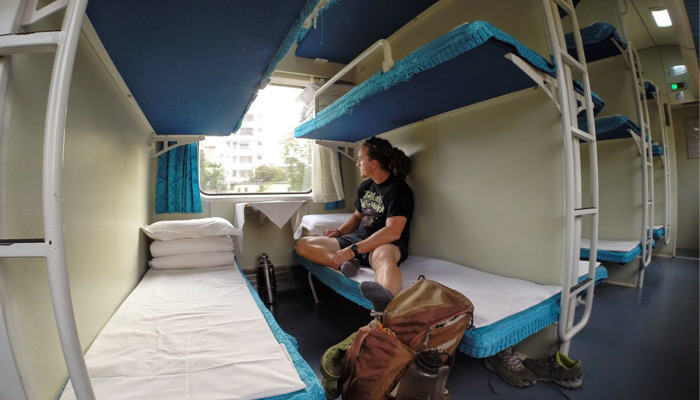 The Hard Sleeper of Beijing to Lhasa Train
The Hard Sleeper of Beijing to Lhasa TrainThe Tibet train is different from the High-speed train
The main difference between the high-speed train and the Tibet Train is the speed at which it travels. While high-speed trains usually travel at speeds of between 250 and 350 kilometers per hour, the Tibet Trains usually average a speed of around just 73-91 kilometers per hour. In fact, while the trains to Tibet are designed to travel at speeds of up to 160 kilometers per hour, they rarely go over 100km/h. This is why the trains to Tibet can take from 20 to 53 hours to reach the plateau.
 Tibet Trains usually average a speed of around just 73-91 kilometers per hour.
Tibet Trains usually average a speed of around just 73-91 kilometers per hour.Another major difference between high-speed trains and the Tibet Trains is the type of carriage used. In the high-speed trains, the carriages are mostly seats, with no sleeper carriages available. This is due to the trains being able to reach their destinations in a much shorter time, reducing the need to include sleeper carriages. This also means that the trains can carry more passengers, making them more cost-effective.
How to Take a High-Speed Train when Traveling from Beijing to Tibet?
While there is no direct high-speed train from Beijing to Lhasa, that does not mean you cannot travel on one on your journey to the roof of the world. Except for the train from Beijing to Lhasa, one can also take Tibet trains from other departure cities, which can be reached from Beijing using a high-speed train.
Route 1: Beijing to Tibet via Xi'an
Historic Xi'an is connected to Beijing by a high-speed train route that only takes 4.5 to 6 hours, making it an excellent option for a high-speed train on the way to Tibet. There are more than a dozen trains to choose from every day that depart between 06:39 and 19:00. Second-class seats cost 512.5 RMB, first-class tickets are 820.5 RMB, and business-class tickets are 1620.5 RMB.
 Visit the Terra Cotta Warriors in Xi'an
Visit the Terra Cotta Warriors in Xi'anFrom Xi'an, you can fly or take a train to Lhasa. Flights from Xi'an Xianyang International Airport to Lhasa Gonggar International Airport take around 3 hours and 35 minutes.
Direct trains to Lhasa Xi'an depart two to three times a day. The trip takes around 31 hours, and tickets cost around 611.5 RMB for hard sleeper and 969.5 RMB for a soft sleeper.
Route 2: Beijing to Tibet via Xining
Xining is the closest you can get to Tibet by high-speed train, making for the shortest all-train journey from Beijing. Direct high-speed rail connections between Beijing and Xining opened in 2023, dramatically reducing travel times. The Beijing-Xining train departs every day at 08:13 and arrives at 18:27, 10 hours and 14 minutes later. Prices range between 773 RMB for second-class seats and 2496.5 RMB for business class.
Xining is also the real beginning of the Qinghai-Tibet railway, the engineering marvel that travels through the unique landscapes of the Tibetan Plateau. Trains depart from Xining to Lhasa at least six times a day between 11:41 and 21:50. The journey takes between 19h 39m and 21h 30m to reach Lhasa. Hard sleeper berths cost around 495 Yuan, and soft sleepers cost around 781 Yuan.
 One can enjoy unique landscapes of the Tibetan Plateau along the Qinghai-Tibet railway.
One can enjoy unique landscapes of the Tibetan Plateau along the Qinghai-Tibet railway.Route 3: Beijing to Tibet via Lanzhou
Lanzhou is another good option for an all-train journey to Lhasa. The high-speed train from Beijing to Lanzhou takes between 6h 43m to 9h 11m. There are three daily trains, and the fastest train, G91, leaves at 07:55. Second-class seats cost 777 RMB, first-class seats cost 1243.5 RMB, and business-class seats cost 2415.5 RMB.
Four trains a day are available from Lanzhou to Lhasa, departing between 08:40 and 16:36. The journey takes 22.5 to 23 hours. Hard sleepers cost around 522 RMB, and soft sleepers are 823 RMB.
 One can take a Lanzhou city tour before heading to Tibet by train.
One can take a Lanzhou city tour before heading to Tibet by train.Route 4: Beijing to Tibet via Chengdu
Chengdu has long been a central transportation hub for southwest China, which makes it a convenient transfer point for getting to Lhasa. Three to five daily high-speed trains travel between Beijing and Chengdu. Most depart in the morning between 07:00 and 09:45, and one leaves at 15:00. The fastest trains take just over 7.5 hours to arrive and cost from 840.5 RMB for a second class ticket to 1344 RMB for a first class ticket.
 Chengdu is a convenient transfer point for getting to Lhasa.
Chengdu is a convenient transfer point for getting to Lhasa.From Chengdu, you can fly to Lhasa. There are more than 20 flights a day from Chengdu Shuangliu International Airport and Chengdu Tianfu International Airport to the Lhasa Gonggar International Airport. The flight only takes around 2.5 hours and generally costs 1450 RMB per person for a one-way economy ticket.
Tips for Taking High-Speed Train from Beijing to Tibet
Traveling from Beijing to Tibet by train is a unique experience. Here are a few helpful tips to ensure you have a convenient experience.
(1) Booking train tickets in advance to secure your seats
We recommend booking train tickets 15 days in advance to secure the seats you want. Demand for tickets is high, particularly during the peak season from June to October. If you plan on traveling to Tibet during this time, the sooner you book tickets, the better.
It's best to book your tickets through a reputable travel agent. As a leading Tibet Travel agency, we have a large number of annual ticket reservations and a convenient online booking service available 24 hours a day. Let us help you get the tickets you need.
(2) Obtaining the Tibet Travel Permit before taking a train or flight to Lhasa
A Tibet Travel Permit is needed by all international travelers to Tibet. You will need it to board your flight or train to Lhasa. Processing the permit takes 7-14 working days and can be started before you arrive in China. The fees and service for obtaining the Tibet Travel Permit and additional permits needed to visit other parts of Tibet are included in our tour packages. Just send us a copy of your passport, Chinese Visa, and personal information, and we'll take care of the rest.
 Tibet Travel Permit is required to visit Tibet.
Tibet Travel Permit is required to visit Tibet.(3) Preparing for the potential altitude sickness
The Qinghai-Tibet train passes over Tanggula Mountain Pass at 5,072 meters, so altitude sickness is a real possibility. Before leaving for Tibet, discuss potential symptoms and medicines you can bring with your doctor. The trains are equipped with an oxygen supply system to help passengers, and staff onboard are well-trained in helping people experiencing discomfort.
(4) Packing essentials for your train journey
Depending on your route, you'll be on the train for over a full day, so packing the essentials is important. In addition to your travel documents, consider bringing some pajamas and light slippers to stay comfortable overnight. Charging ports are available on the trains, so your phone, laptop, camera, headphones, or other electronics can help you pass the time. Toiletries such as a small towel, soap, and wet wipes will help you refresh, and toilet paper is essential. If you don't have a local WeChat Pay or AliPay account, bring some cash in Chinese Yuan to buy food or snacks. You can also feel free to bring your favorite snacks with you onto the train.
Conclusion
While you can't directly take a high-speed train from Beijing to Tibet, you can use China's excellent high-speed rail network to get closer to Tibet. Then, you can either take a flight or continue by train to your final destination in Tibet. This can help you save time on your journey and make reaching the "Roof of the World" more accessible.





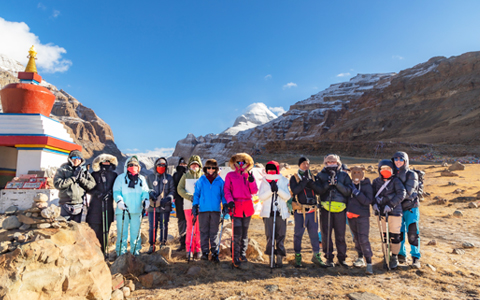

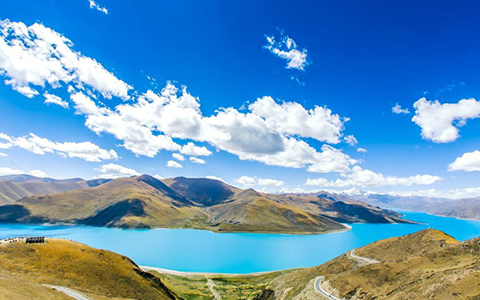
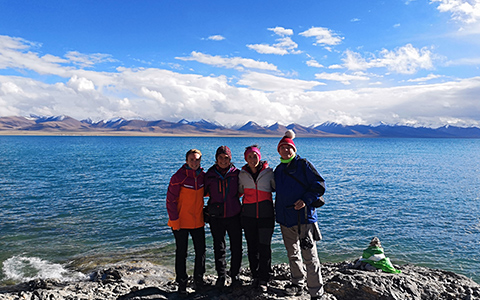
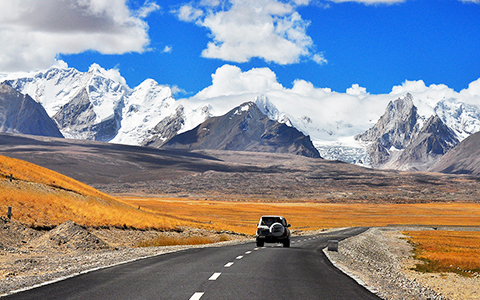





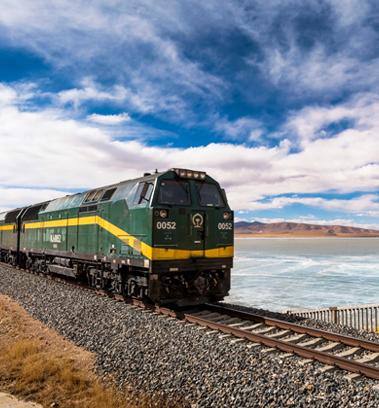










 The Hard Sleeper of Beijing to Lhasa Train
The Hard Sleeper of Beijing to Lhasa Train Tibet Trains usually average a speed of around just 73-91 kilometers per hour.
Tibet Trains usually average a speed of around just 73-91 kilometers per hour.
 Visit the Terra Cotta Warriors in Xi'an
Visit the Terra Cotta Warriors in Xi'an One can enjoy unique landscapes of the Tibetan Plateau along the Qinghai-Tibet railway.
One can enjoy unique landscapes of the Tibetan Plateau along the Qinghai-Tibet railway. One can take a Lanzhou city tour before heading to Tibet by train.
One can take a Lanzhou city tour before heading to Tibet by train. Chengdu is a convenient transfer point for getting to Lhasa.
Chengdu is a convenient transfer point for getting to Lhasa. Tibet Travel Permit is required to visit Tibet.
Tibet Travel Permit is required to visit Tibet.

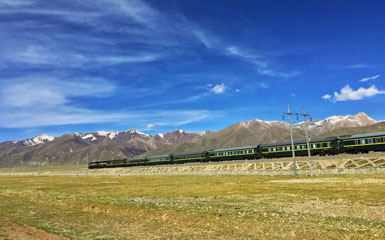







Ask a Quick Question